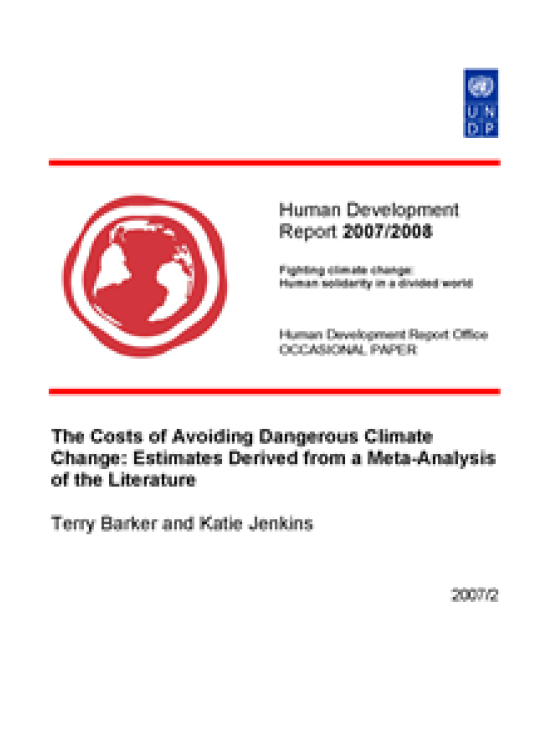The Costs of Avoiding Dangerous Climate Change
Estimates Derived from a Meta-Analysis of the Literature

Download Report by Language
Document
barkerterryandjenkinskatie.pdf
(265.54 KB)
Citation
Barker, Terry, Jenkins, Katie. 2008. The Costs of Avoiding Dangerous Climate Change: Estimates Derived from a Meta-Analysis of the Literature. New York.
The Costs of Avoiding Dangerous Climate Change
Estimates Derived from a Meta-Analysis of the Literature
Posted on: January 01, 2008
This paper reviews the literature on the cost of avoiding dangerous climate change, defined as the costs of stabilising the climate as 450ppm CO2-eq or lower, consistent with the achievement of the EU’s 2ºC temperature target rise above pre-industrial levels. There are very few studies on these costs, so we have supplemented the literature by using the meta analysis conducted for the Stern Review to extrapolate the costs for the more stringent mitigation necessary for the 2ºC target. The paper emphasises the importance of the assumptions about methods and policies chosen by the modellers, and the uncertainty about the costs in terms of modelling approaches and policy options that may be adopted by governments. If the models allow for (1) all the mitigation options agreed as feasible in the literature, i.e. including biomass, bio energy and land sinks, (2) induced technological change, and (3) the co-benefits of GHG mitigation, mainly in the form of reduced damages for air pollution on human health and crop productivity, the analysis suggests that the global costs by 2030 in trajectories towards stabilization at concentrations of 450ppm CO2-eq by 2100 are around 2 to 3% of GDP. However, these costs are without international emission permit trading. With permit trading, the global average costs fall to 1 to 2% of GDP by 2030. If the policy also allows for the revenues from auctioned permits and carbon taxes to be recycled as a component of national environmental tax reforms (in which taxes on exports, labour and/or capital are reduced), national and global economies can benefit from deep mitigation, perhaps as much as 5% of GDP above baseline by 2030. The possibility of realising such benefits depends on the existence of underemployed resources, e.g. under-utilisation of the rural workforce, a feature of many developing economies, and international co-operation on policy co-ordination, which is unprecedented in scale and duration. In other words, the global adoption of stringent mitigation targets, with well-designed and equitable supporting policies, involving co-ordinated international policies and national tax reform, could promote economic development; but the challenge for policy negotiators is formidable.

